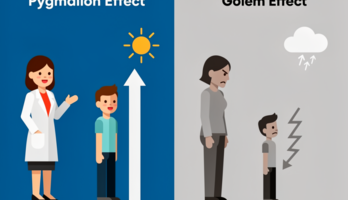Concepts with Symbian OS (779878), страница 14
Текст из файла (страница 14)
It implements thevarious memory models that platforms require.• The nanokernel implements the most basic and primitive parts ofSymbian OS and is used by the phone part of the operating system aswell as the larger kernel layer.• The real-time OS and personality layers are specifically designedto implement phone functionality. The RTOS implements the GSMfunctions of a smartphone in direct connection with the hardware.The personality layer allows a smartphone manufacturer to use adifferent implementation of phone function (say, analog functionality)by using the implementation from another operating system or deviceand using a personality layer to connect that implementation to theGSM functionality of the smartphone.
The personality layer then actsas an interpreter, translating the non-GSM implementation into animplementation the smartphone can understand.• User-mode layers include microkernel servers as well as user applications. As we have discussed before, these interact with the SymbianOS kernel to request and initiate kernel-mode operations.There are many paths through the Symbian OS kernel structure. Auser-mode application might go through the file server, which wouldmake a Symbian OS kernel request, which would require device I/O,which would make use of the nanokernel. A phone call might initiatefunctions in the RTOS, which would interact directly with the hardware.58KERNEL STRUCTUREAn application might simply cause arithmetic instructions to execute andmight not use any kernel functions at all.Note that we did not mention the extension portion of the kernelstructure.
Extensions are device drivers that are loaded and executedwhen a phone boots up. They interact with the kernel and can causekernel-mode operation. However, they represent layers in the kernelthat extend functionality, but do not directly interact with user-modeapplications. For example, the ASSP layer is an extension.3.5 SummaryThis chapter has been about how kernels are structured and how thevarious parts of a kernel interact with each other and with user-modecode. We began with a general look at kernel components from a layeredperspective and the perspective of active and passive components.
Wethen defined system calls and interrupts in relation to the kernel. Wecompleted the chapter by taking a fresh and complete look at theSymbian OS kernel structure, from the hardware to user-mode threads.In the next chapter, we begin to look at memory models and howmemory must be organized to use it effectively.Exercises1.Consider the following services (seen in Chapter 2) and classify themas to where their implementation would take place in the kernelstructure.a. Opening and closing filesb.Writing to a registerc. Reading a memory celld.Receiving a text messagee. Playing a sound bite.2.Reconsider the following question from Chapter 2 and pinpoint theplace these operations should happen in the kernel structure.
Whichof the following operations should be done in the kernel as privilegedmode?EXERCISES59a. Reading and writing filesb.Sending a text messagec. Taking a picture with the camerad.Notifying a program about data receivede. Switching processes on the CPUf.Reading from a memory cell.3.Consider a software timer that would be used by software as a ‘wakeup device’ or an alarm that would send a software interrupt whenthe timer goes off. Place a priority on the timer interrupt. Name someevents that are more important than a timer event. Name some eventsthat are not as important.4.Should a timer be a real-time or a system-time object? In other words,should it be implemented by the RTOS or by the system kernel?Explain your answer.5.Consider the phases of interrupt implementation (Section 3.3).
Wementioned that ISR execution is pre-emptible. Should the other stepsbe pre-emptible? Give reasons for your answer.6.Consider again the diagram in Figure 3.2. Why is the nanokernel ontop of the Symbian OS kernel, which is on top of the memory model?According to Figure 3.1, the nanokernel is the innermost layer. Canyou describe why the diagram in Figure 3.2 is accurate?7.Symbian OS is an extensible operating system. If someone wanted to,they could write code that would run completely in kernel mode foreach of its operations.
Explain how this could happen – especiallywhen we described system calls as built into the operating system.8.Describe why you might want to replace passive components of anoperating system with components that you could write. What couldhappen if this were done maliciously?9.Consider how platform security in Symbian OS might be effective.Describe how forcing a system call to present capabilities before it isserviced might protect a smartphone from harmful effects of software.4Processes and ThreadsMany people enjoy the circus. One act that I remember seeing as a childis a man who kept plates spinning on sticks.
He would start one platespinning, then add more and more until he had an incredible numberof plates going at the same time. He would spend his time running fromplate to plate, making sure all were spinning and none were rotating tooslowly. While he was running himself ragged, all the plates amazinglystayed in the air. In a sense, this circus performer is a shared resource,powering all the plates in the operating environment.
If he spent his timegetting a single plate to spin perfectly, none of the other plates would gettheir turn. But if we accept the fact that plates do not spin perfectly andwe allow plates to slow down a bit, we can get an environment whereall plates are spinning.Computer operating systems are like the plate spinner. They have alimited set of CPUs (usually only one) that are to be used by manyprocesses at once. If an operating system were to let one process run tocompletion before others were allowed to use the CPU, the result wouldbe a slow system where very little would get done.
If all programs thatwanted the CPU were allowed to try to grab it, there would be chaosand very little would get done. Therefore, we must force all programs tocooperate and share the CPU in an orchestrated, organized fashion. Indoing so, we realize that a single program might take longer, but overall,all programs can use the processing power, in what looks like a parallelfashion.The concept of a process is part of this orchestrated system. A processis a program that is in a state of execution.
It forms the center point62PROCESSES AND THREADSof a system that shares the CPU and grants access to all programs thatneed it. This chapter examines this system of sharing the CPU and thecomponents that make it up. We start by looking at the big pictureand giving an overview of the components of the process model. Wethen focus on processes and how they can be manipulated – both bythe operating system and by users. We conclude the chapter by lookingspecifically at how the process model works on mobile phones based onSymbian OS.4.1 An Overview of the Process ModelBefore we discuss how the process model applies to various architectures,we should first define the components of the model.
The discussion ofprocesses sometimes suffers from what to call these components. If weconsider all processes, we can define several different types that could runon a system. Batch systems run jobs that complete without interruption.In Chapter 2, we defined user programs or applications as programs thatinteract with users and run on time-sharing systems. We will refer to everyexecuting program on a system as a process; a process may execute onbehalf of a user or the operating system.
Thus, any executing code (a job,a program or an application) is characterized as a process.ProcessesAs we stated previously, a process is an executing program. A process isdifferent from the program that defines it in several ways. First, a processis in a state of execution. This means that its code is being executed (oris waiting to be executed) by the CPU. Second, a process is obviouslymade up of more than just program code.
A process is defined by codethat executes, called the text section, but it is also characterized by aset of data (usually program variables), called the data section of theprocess, and the state of other hardware components it needs to run.These hardware components include the program counter (which holdsthe address of the instruction being executed in the process), temporaryregisters used to execute the process’s instructions, and the program stack(containing data required to run the program from a language point ofview: parameters, return addresses and local variables).The difference between a program and a process demonstrates itselfin many ways.
















